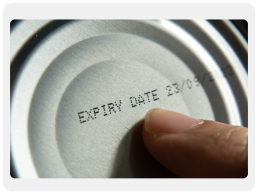EXPIRY DATES
The food waste crisis: The hidden cost of expiry dates.
Expiry dates were introduced to guarantee safe and good quality food, but they’re also a huge driver of food waste. With concerns about sustainability, efficiency and the cost of living, is it time for a rethink?

Safety or Sustainability? Do we have to choose one or the other?
The problem
9.5 million tonnes of food are wasted in the UK every year, with 70% coming from households. Shockingly, 4.5 million tonnes of this food is still edible. In the US, 119 billion pounds of food is thrown away every year, with 42 billion pounds coming from households. The cost? $1500 per household per year. The reason behind throwing food away, could lie with reliance on expiry date labels without considering the environmental impact of food waste.
Why are we throwing away so much food?
A big part of the problem comes from how expiry dates are set. ‘Use-by’ and ‘Best before’ labels are designed to err on the side of caution, ensuring food is safe even in worst-case storage conditions. But real-life conditions vary. Some food lasts much longer than its expiry date suggests, but millions of people are unaware and bin food that’s still perfectly fine to eat.
There’s a cost to overcautious expiry dates. One is the financial aspect of it. In the UK, food waste costs each person £250 per year. In the US, that jumps to $1500 per household. On the environmental side, food waste is responsible for 8-10% of global greenhouse gas emissions. In the UK alone, wasted food contributes 36 million tonnes of CO₂ emissions per year.
What needs to change?
Clearer labelling: Most people don’t know the difference between different expiry date labels, such as ‘best before’ (quality) and ‘use by’ (safety). Standardising labels could save thousands of tonnes of food waste, but countries and states have their own unique systems, or leave it to individual business to decide.
Consumer confidence and education: Many people already trust their senses over expiry dates. Educating consumers on food safety, like checking smell, texture, and temperature, could help cut waste at home.
Smart packaging & sensors: Technology can provide real-time freshness monitoring via smart food labelling, moving beyond rigid expiry dates to food that tells you when it’s still good to eat.
The future of expiry dates
Fixed expiry dates don’t know how fresh food really is. With 71% of wasted food still edible, it’s clear we need a better way. In 2030 we won’t be using worst-case-scenario printed dates, instead food will tell you how fresh it is.
References BusinessWaste, MITRE, WRAP, WasteManaged
Schedule a demo
Let's shape the future of food quality and food waste.

